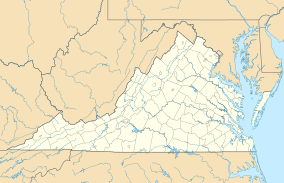Bridges Creek, Virginia
| George Washington Birthplace National Monument | |
|---|---|
|
IUCN category V (protected landscape/seascape)
|
|
 |
|
| Location | Westmoreland County, Virginia, United States |
| Nearest city | Colonial Beach, VA |
| Coordinates | 38°11′10″N 76°55′50″W / 38.18611°N 76.93056°WCoordinates: 38°11′10″N 76°55′50″W / 38.18611°N 76.93056°W |
| Area | 661.7 acres (267.8 ha) |
| Established | January 23, 1930 |
| Visitors | 130,647 (in 2011) |
| Governing body | National Park Service |
| Website | |
|
George Washington Birthplace National Monument
|
|
| NRHP reference # | 66000850 |
| VLR # | 096-0026 |
| Significant dates | |
| Added to NRHP | October 15, 1966 |
| Designated VLR | October 18, 1983 |
George Washington Birthplace National Monument
The George Washington Birthplace National Monument is a national monument in Westmoreland County, Virginia, United States. This site was established in the 17th century as a colonial plantation by Englishman John Washington, George Washington's great-grandfather. George Washington was born here on February 22, 1732. He lived here until age three, returning later to live here as a teenager.
The foundation outline of Washington's house are marked and nearby a memorial house was built in 1931 in historicist style to represent and educate about the plantation period. At the entrance to the grounds, now maintained and operated by the National Park Service, is a Memorial Shaft obelisk of Vermont marble, which is a one-tenth scale replica of the Washington Monument in Washington, D.C.
The monument and its preceding plantation, which eventually became called Wakefield, are located where Popes Creek joins the Potomac River, and is representative of 18th-century Virginia tobacco farms. The park's farm buildings, groves of trees, livestock, gardens, and crops of tobacco and wheat, represent the boyhood environment Washington knew. The public park was established in 1930 and opened in 1932.
George Washington's great-grandfather settled this plantation in 1657 at the original property on Bridges Creek. The family acquired expanded land to the south toward nearby Popes Creek where the first section of the house in which George Washington was born was built before 1718 and enlarged by his father between 1722–1726. It was further enlarged by the mid-1770s to a ten-room house, known as "Wakefield". This house, which George Washington in 1792 would describe as "the ancient mansion seat," was destroyed by fire and flood on Christmas Day, 1779, and never rebuilt.
...
Wikipedia




